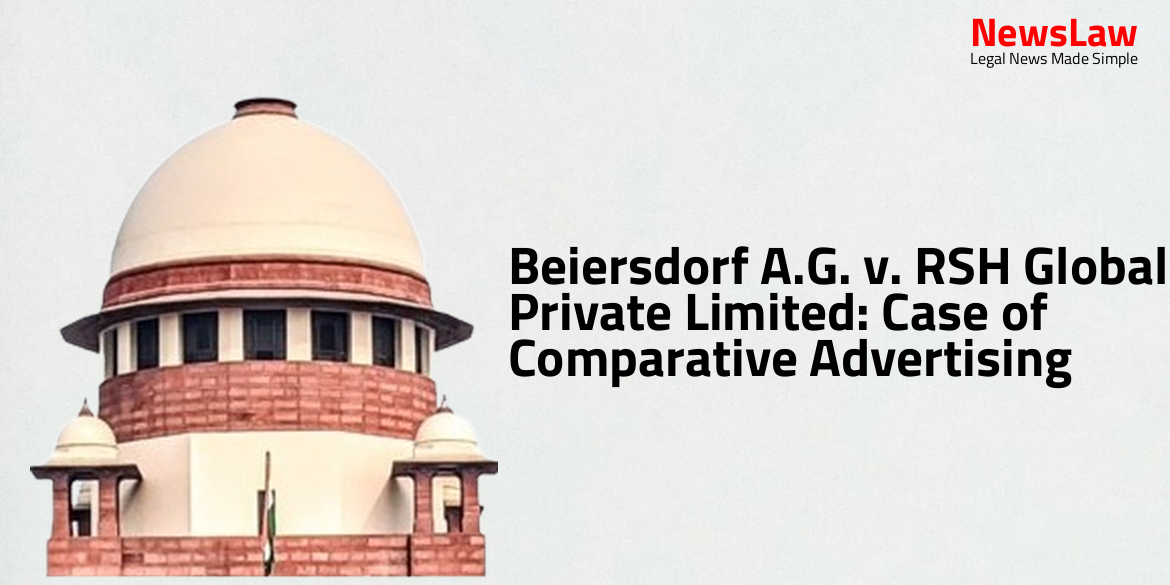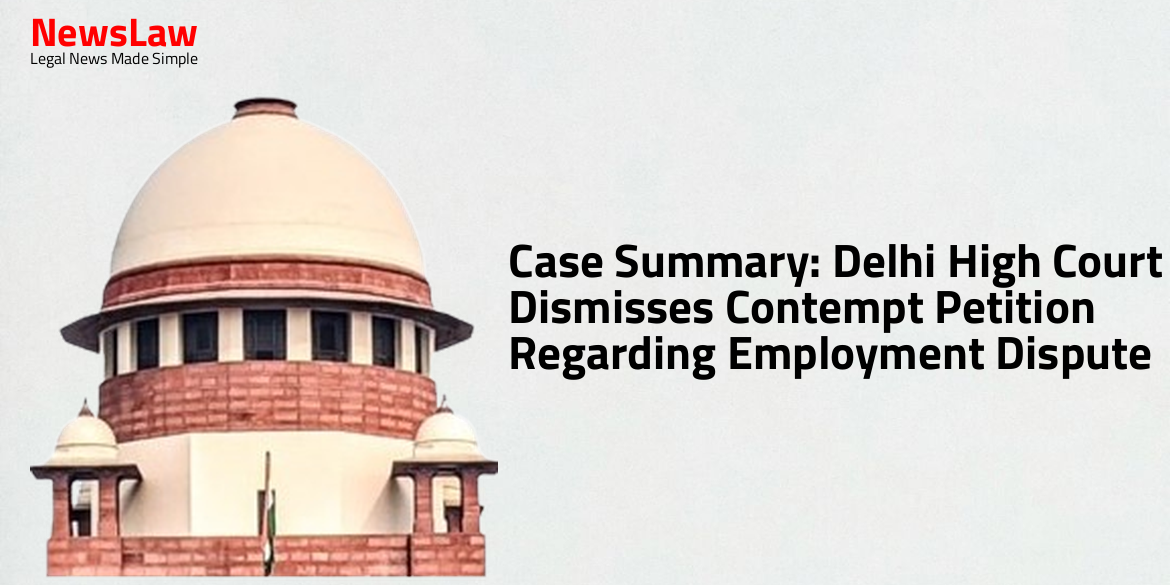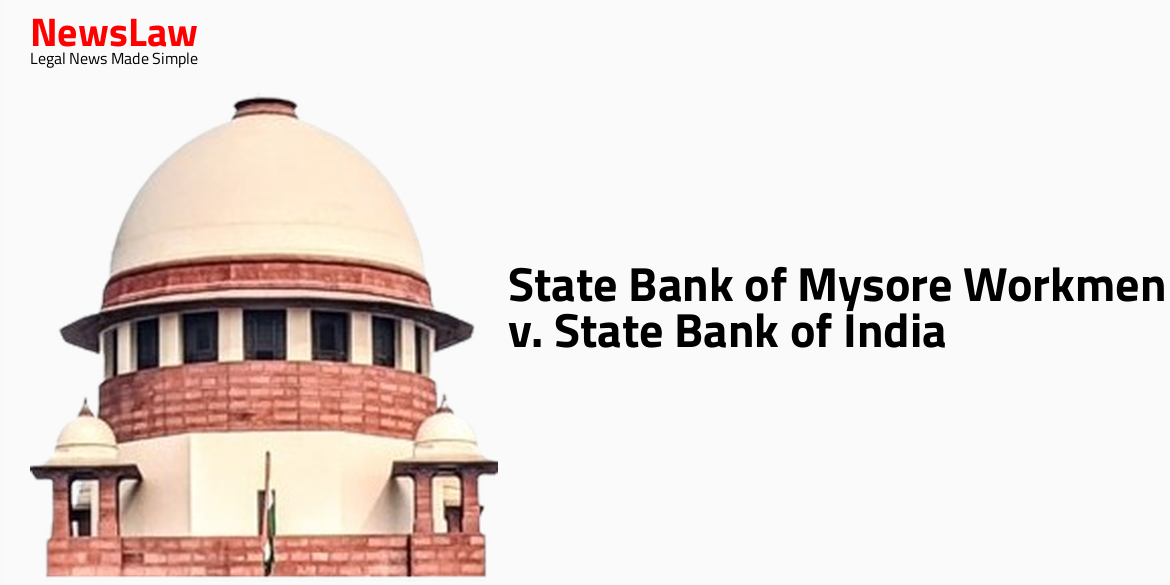In a recent landmark ruling by the Delhi High Court, the case of Beiersdorf A.G. v. RSH Global Private Limited regarding comparative advertising practices has been resolved. The dispute centered around the use of distinctive colors in marketing campaigns and the implications on trademark rights. Dive into the details of this significant legal battle.
Facts
- Plaintiff became aware of defendant’s marketing activities involving sales representatives in malls.
- Comparative demonstration of products similar to ‘NIVEA Crème blue tub’ and ‘Ponds Superlight Gel’.
- Plaintiff filed for withdrawal of the suit after believing defendant stopped the activity.
- Impugned activity involved applying products on customers’ skin and using a magnifying glass for comparison.
- Plaintiff’s affidavit for withdrawal was filed under the impression that defendant had ceased the impugned activity.
- Notice was issued in response to the withdrawal application.
- Matter remained pending on the Board after notice was issued.
Arguments
- Defendant’s product is a gel-based moisturiser, marketed as superlight weight gel.
- Defendant’s gel provides hydration without getting sticky leaving lesser oily residue.
- Comparison made between defendant’s light gel and plaintiff’s heaviest cream.
- Plaintiff’s counsel argues that correct versions of moisturisers should be compared.
- Defendant used a blue colored tub suggestive of plaintiff’s product.
- Defendant did not withdraw from the activity of comparison.
- Plaintiff, Beiersdorf A.G., claimed trademark registrations for the brand ‘NIVEA’ in various classes, including the distinctive blue color.
- Defendant, RSH Global Private Limited, used a blue color jar in a cream comparison which led to a notice from Unilever and eventual withdrawal of the advertisement in goodwill.
- Plaintiff had historical disputes with Unilever and its subsidiaries regarding comparative advertising of ‘NIVEA’ against products like ‘DOVE’ and ‘Fair & Lovely’.
- Plaintiff argued that the distinctive blue color and trade dress of ‘NIVEA’ products had been extensively used and associated with their brand worldwide.
- Defendant’s main argument was that comparative advertising is permissible, but disparagement is not, and they claimed to sell various types of moisturisers in blue packaging.
- The court focused on the association of the blue color with plaintiff’s ‘NIVEA’ brand and past instances of disputes between the parties over the use of the color blue.
- Plaintiff highlighted the extensive promotional expenses and global recognition of the ‘NIVEA’ brand, including being declared a well-known trademark by the court.
- Trademark rights were discussed to be territorial, with plaintiff having registrations in over 175 countries for ‘NIVEA’ trademarks and variants.
- The argument encompassed the comparison of products, the impact on consumers’ skin, and the alleged disparagement in the impugned promotional campaign by the defendant.
- Plaintiff and defendant presented their sales figures and promotional expenditures to showcase the market presence and importance of their respective products.
Analysis
- The use of a distinctive blue color tub without a label by the defendant seems to be aimed at associating with the plaintiff’s NIVEA Crème.
- The defendant’s knowledge of the plaintiff’s distinct use of the color blue for NIVEA Crème is evident.
- The intent and objective behind using only the blue cream tub in the advertisement need to be assessed.
- The comparative presented during the advertisement may be misleading to consumers.
- Comparative advertising requires clarity on what aspects of the products are being compared to avoid misleading consumers.
- Comparing dissimilar products can be misleading and may lead to disparagement of a competitor’s product.
- The overall impression and message conveyed by the advertisement should be considered for assessing disparagement.
- The choice of color and labeling in the advertisement could be deemed as misleading or a form of disparagement.
- Comparative advertising should be truthful and cannot attribute superiority to a competitor’s product due to faults.
- The importance of the blue color to the plaintiff’s product’s identity is legally acknowledged and protected.
- Generic disparagement of a rival product without specifically identifying or pinpointing the rival product is considered objectionable.
- The law relating to advertisements extends to in-mall marketing campaigns as well.
- In in-mall marketing campaigns, the possibilities of imputation, aspersion, implication, overstatement, leading to disparagement will be limitless.
- Advertisements in any form, whether print, digital, TVC, or in-mall campaigns, are subject to the same scrutiny for misleading or disparaging content.
- The communication in in-mall marketing campaigns can involve gestures, conversations, or suggestive indications, adding complexity to the assessment of potential disparagement.
- The threshold for assessing misleading or disparaging content in in-mall campaigns may be slightly lesser due to the more personalized and interactive nature of the communication.
- In specific instances, such as the ‘NIVEA’ blue color tone and distinctive shape being associated with the plaintiff’s product, remedies have been sought and granted for misleading or disparaging advertisements.
Decision
- Defendant and related parties are restrained from conducting marketing/advertising activities that disparage plaintiff’s ‘NIVEA’ products in comparison to their own products under the trademark ‘Ponds’.
- The application is disposed of with the given directions.
- Next hearing scheduled on 24 July, 2024 before the Joint Registrar.
Case Title: BEIERSDORF AG Vs. HINDUSTAN UNILEVER LIMITED (2024:DHC:3875)
Case Number: CS(COMM)-300/2021



